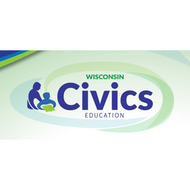
(View Complete Item Description)
This lesson is designed to introduce students to the Constitution. It can be used as a one-day lesson to fulfill the Constitution Day requirement or as a means to begin a conversation about the framers of the Constitution. It has been carefully designed to highlight the three spheres of civic education as detailed by the National Constitution Center; that is, the lesson includes civic knowledge, active citizenship, and democratic deliberation.
The Founders’ Library refers to the prior knowledge the Founding Fathers brought to the Philadelphia Convention of 1787. Students will examine these ideas and use them to analyze the Constitution and Bill of Rights. At the same time, students will be considering ideas and information that relate to their own lives.
Students will finish the lesson by considering the idea of prior knowledge. Each student will be asked to think of books, music, movies, or television shows that impact ideas about the United States. The combination of personal experience and the critical examination of the Constitution will allow the students to have a deeper understanding of the creative imagination that was necessary to write and debate the Constitution of the United States
This lesson is designed for one forty-five minute high school class period. It does not have to be limited to the social studies classroom, but can be completed in a variety of settings from a small seminar to a traditional humanities classroom.
Material Type:
Lesson Plan
Author:
National Constitution Center




















